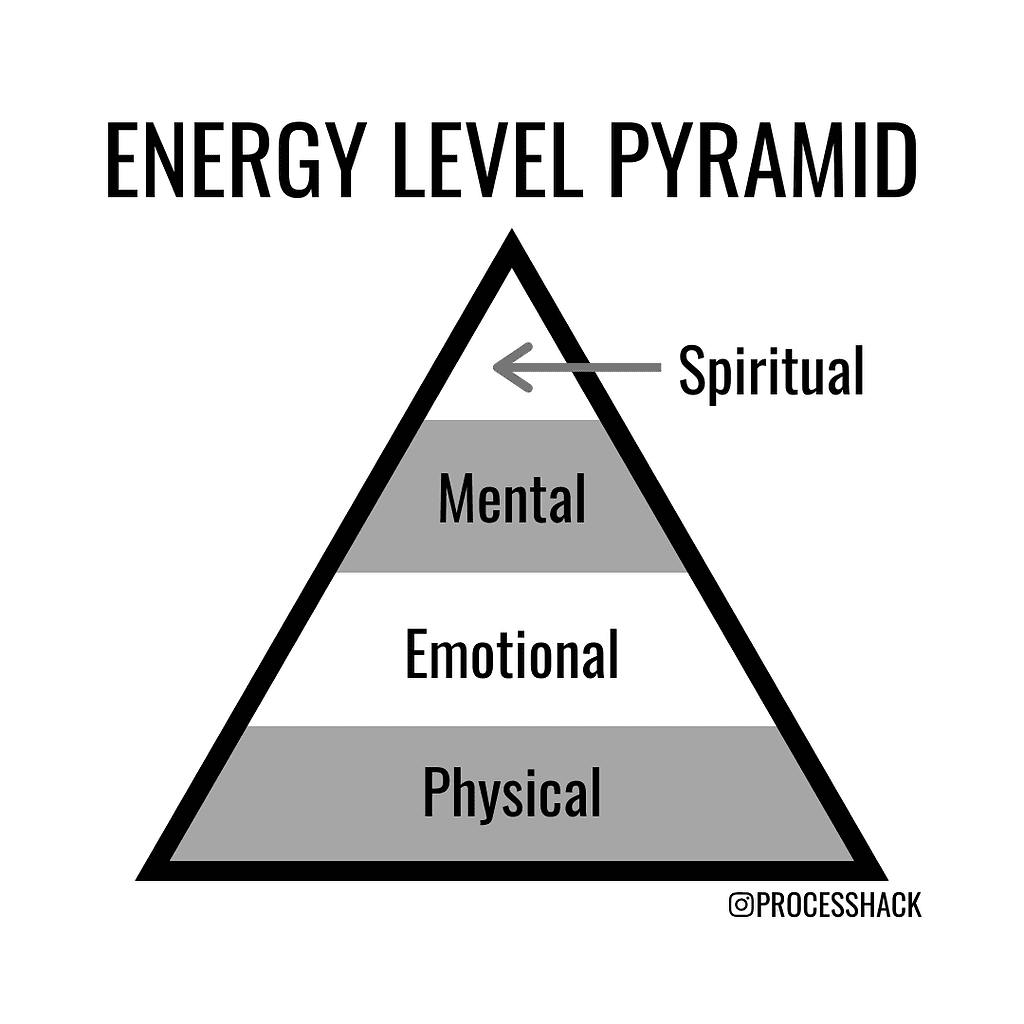How to Get More Done in Less Time?
Have you ever found yourself staying late at the office yet still feeling like you didn’t accomplish anything? Or waking up Sunday morning with a list of to-dos as long as your arm is still alive, and somehow, the day slipped away without much progress made?
If any of this sounds familiar, then you’ll definitely want to read on. For all of us entrepreneurs or high performers, time is our most precious commodity. We wear so many hats that it’s easy to get pulled in a million directions at once without making meaningful headway on our biggest goals and priorities.
In this post, I’ll share some surprisingly simple strategies that have helped me get significantly more done each and every day without sacrificing quality or burning the midnight oil. From quick tips to major productivity hacks, you’ll leave here with actionable ways to dominate your to-do list and actually have time to smell the roses once in a while.
Let’s kick wasted time to the curb and get started, shall we?
What is Getting Things Done?
The Getting Things Done (GTD) method isn’t just about ticking off items on your to-do list; it’s a systematic method for organizing and prioritizing your tasks more effectively. By understanding and applying GTD, you ensure that you’re not just busy but genuinely productive.
Why You Need to Minimize Distractions and Stay Focused
In today’s fast-paced environment, it is more crucial than ever to focus on important tasks without getting sidetracked. Distractions are not just minor interruptions; they can significantly derail your progress toward your goals.
When you learn to minimize these disruptions, you create an environment conducive to deep work, where difficult tasks are tackled with undivided attention. Mastering the skill of focus is indispensable to genuinely excelling in your personal and professional life.
Here are a few reasons why:
- Efficiency: Handling important tasks with complete focus allows you to complete them in a few hours, much faster than if you were multitasking.
- Quality: Deep focus enables you to produce higher-quality work, as you can give your full attention to the task at hand.
- Stress Reduction: Constant switching between tasks can create a false sense of urgency and increase stress. Focusing on one thing at a time helps reduce this.
My approach involves a step-by-step process that helps you identify tasks, prioritize them, and learn to delegate tasks effectively. By adopting this method, you can ensure that your work expands in quality and impact rather than just in quantity.
This is not just about working harder; it’s about working smarter.
How to Get More Done in Half the Time
Let me introduce you to a unique process that revolutionizes the traditional approach to productivity. By applying this method, you can achieve more by working smarter, not harder, thus dramatically enhancing your time management skills.
By following these steps, you’ll find that you’re not only completing tasks more quickly but also creating more hours in your day for what you love. If you’re ready to dive deeper into this method and truly transform your productivity, continue with our full tutorial.
Here, we’ll explain each step in detail and provide you with actionable advice on integrating these practices into your daily routine.
#1) Don’t Manage Time, Manage Energy
“Forget about managing your time, … Start with the basics: … manage yourself and especially your energy.” – Thanh Pham, Asian Efficiency
To get more done in the next 90 days, you should refrain from trying to manage your time. It is out of your control and will go by no matter what you do. In addition, time itself is not the best way to measure productivity. The pure number of hours that we put toward our work items does not correlate with the amount of work actually done or the value produced by that work. The value you create in the world is something that you control, and your energy and feelings directly affect that value.
Thus, we should manage ourselves, especially our energy, to be more productive. In The Power of Full Engagement, Jim Loehr and Tony Schwartz show us how to manage our four types of energy (not time), live a life of purpose, and understand our limits. Check our summary of The Power of Full Engagement.
Energy Level Pyramid
Loehr and Schwartz categorize energies into four types shown in a pyramid:
Physical Energy
Physical Energy is the quantity of energy, which ranges from low to high. It forms the foundation of the pyramid and is increased by the main components of sleep, exercise, and nutrition.
Emotional Energy
Emotional Energy is the quality of energy, which ranges from negative to positive. Emotional energy is improved by experiencing more positive emotions (joy, gratitude, inspiration, etc.) over negative ones (anger, fear, sadness, etc.).
Mental Energy
Mental Energy is the focus of energy, which ranges from narrow to broad and internal to external. Mental energy is clearly concentrated when one has a positive attitude and optimism over a negative attitude and pessimism.
Spiritual Energy
Spiritual Energy is the force of energy, which correlates with how closely you are aligned with your core values and purpose. Spiritual energy is maximized by doing work that gives meaning and aligns with one’s purpose in life.
How to Manage Energy
To better manage ourselves, we need to manage our energy. Most of us tend to underdevelop and not stress ourselves physically and spiritually. Vice versa, we tend to overwork ourselves mentally and emotionally without much time for recovery. We achieve Full Engagement by optimizing and aligning all four of our energies.
The Energy Pyramid is a helpful tool because it shows us what we need to focus on and address to move up to the “next level:”
- Physical: Are you brand new to the productivity world?
- Emotional: Are you experiencing frequent changes in your mood and feelings?
- Mental: Are you procrastinating a lot on your work?
- Spiritual: Are you not fulfilled by your work? Are you lacking clarity in your purpose?
Exercise: Focus on One Energy Level by running through the steps provided.
#2) Biggest Myth of Productivity: Multitasking
Our brains can only focus on one thing at a time. When we focus on multiple things, we hinder ourselves from getting more done in the next 90 days. Multitasking causes us to make more mistakes, become more fatigued, and get much less done.
Deep Work
Thus, we should work on doing one thing at a time and do it deeply. In Deep Work, Cal Newport defines Deep Work as work done that in a state of distraction-free concentration that pushes your critical thinking to the limit. Check out our summary of Deep Work here!
We should prioritize our tasks and start with the most important and intensive tasks. Newport argues that the subset of the population that routinely does Deep Work will thrive. Each distraction hurts our concentration and significantly adds to the time it takes to get the work done.
Shallow Work
Later in the day, we can allocate time to Shallow Work or busy work that does not require much brainpower. This includes administrative tasks, cleaning your apartment, or working out.
Shallow Work can be mindless, so we tend to do it alongside other activities or distractions. We can make our Shallow Work more productive by stacking parallel activities like listening to an Audiobook or Podcast while we do these tasks.
Prioritize Tasks with the Eisenhower Matrix
When managing our time, it’s crucial to prioritize tasks. This means identifying what needs to be done urgently versus what can wait.
One effective method is the Eisenhower Matrix, which divides tasks into four categories: urgent and important, important but not urgent, urgent but not important, and neither urgent nor essential.
By categorizing tasks this way, we can focus on completing the most critical tasks first while also delegating or eliminating less pressing tasks.
Time Blocking with Parkinson’s Law
Another helpful technique for managing distractions and getting work done efficiently is Time Blocking using Parkinson’s Law. This approach involves setting a specific amount of time for each task and striving to complete it within that time frame.
Parkinson’s Law states that work expands to fill the time allotted for its completion. Therefore, if we spend time completing a task, we are more likely to focus and get it done. Time Blocking allows us to prioritize tasks and allocate a set amount of time for each one, helping us stay on track and prevent procrastination.
Take Breaks
After each time block, take a short break. This will help refresh your mind and prevent burnout. During this break, you can relax by stretching, walking, or listening to calming music.
It’s also essential to take a longer break after a set of time blocks throughout the day to maintain productivity and prevent mental fatigue. This could be a lunch break, where you step away from your desk and engage in activities that bring you joy or simply take a power nap.
Exercise: Plan your perfect day by working on ONE task at a time.
#3) Most Important Habit: Morning Routine

“The Way you start your day sets the tone for the rest of the day.”
Doing a Morning Ritual first thing in the morning can help you get more done in less time. Morning routines help you attain confidence and clarity for yourself and what you want to do for the entire day. Developing a consistent morning routine can set a positive tone for the rest of your day.
SAVERS is a comprehensive framework that can be adapted to fit your needs. It was popularized by renowned author Hal Elrod in his book The Miracle Morning. SAVERS stands for Silence, Affirmations, Visualization, Exercise, Reading, and Scribing.
The idea behind SAVERS is to start your day with purposeful activities that promote physical, mental, and emotional well-being. By implementing SAVERS into your morning routine, you can stay focused, energized, and ready to tackle the day ahead.
When you wake up, start with hydration by drinking a glass of water. I recommend having at least 1L of water in the morning to rehydrate your body after a night’s sleep.
S) Silence
Then, take a few minutes to practice deep breathing and meditation. This can help calm your mind and reduce stress before you start your day.
A) Affirmations
Next, recite positive affirmations to yourself. These could be phrases like “I am capable,” “I am confident,” or “I am worthy.” Saying these out loud can help boost your self-esteem and set a positive mindset for the day ahead.
V) Visualization
Visualization is also an important aspect of morning rituals. Take some time to envision yourself accomplishing your goals for the day or even in the long term. This will help motivate and inspire you to work towards those goals.
E) Exercise
Incorporating some form of exercise into your morning routine is also beneficial for both physical and mental health. This could be a simple stretch or a quick workout, whatever works best for you. Moving your body in the morning can help increase energy levels and improve productivity throughout the day.
R) Reading
Then, take a few minutes to read something that inspires or motivates you. This could be a book, an article, or even just a quote. Reading can help stimulate your mind and provide new perspectives, setting a positive tone for the day.
S) Scribing
Lastly, take a few minutes to write down your thoughts, goals, or plans for the day. This can help organize your mind and set intentions for the day ahead. You could also use this time to journal or practice gratitude by writing down things you are grateful for.
Remember, everyone’s ideal morning routine may look different, so find what works best for you and stick with it consistently. With consistency and dedication, you can make the most out of your mornings and ultimately improve your overall well-being.
Exercise: Establish your own Morning Routine. Experiment with different activities and find what works best for you.
Key Considerations For Getting More Done
While the structured steps provided earlier are pivotal, there are a few additional insights that you should keep in mind to truly maximize your productivity. These considerations often go overlooked but can significantly affect how efficiently you manage your time and tasks.
Firstly, understand the importance of mental clarity and health. Productivity isn’t just about the physical act of doing—it’s also about having a clear mind. Regular mental check-ins, mindfulness exercises, and ensuring you have downtime can profoundly impact your ability to focus and, consequently, your productivity.
Secondly, leverage technology to your advantage. Numerous tools and apps are designed to help you track your time, organize tasks, and stay focused. Find the right technology stack to complement your workflow. I personally like using Notion, Slack, and Sunsama to manage my time and tasks effectively.
Lastly, always be adaptable. Your environment and responsibilities will evolve, and so should your methods. Regularly review and adjust your strategies to fit your current circumstances. This adaptability ensures that you continue to perform optimally, regardless of changes in your workload or personal life.
By considering these additional insights, you’re not just working through a list but creating a comprehensive approach to productivity that evolves with you.
Taking it to the Next Level: Use Sunsama
To elevate your productivity further, integrating a tool like Sunsama into your weekly and daily routine can be a game-changer. Sunsama isn’t just another task manager—it’s a weekly and daily planner that combines your calendar, tasks, and communications in one intuitive interface.
This allows you to plan for the current day and the upcoming week. You can see everything you need to tackle in one place, making it easier to plan your day effectively and stay on top of your commitments.
By using Sunsama, you can streamline how you organize your tasks and meetings, ensuring that nothing overlaps or gets forgotten. The tool encourages you to plan your workday the night before, promoting a habit of daily reflection and preparation. This proactive approach ensures that each day, you’re fully aware of your priorities, helping you to stay focused and productive.
Embracing Sunsama as part of your productivity toolkit can provide the structure and clarity needed to increase your efficiency.
Final Thoughts on Getting More Done
As you’ve seen throughout this tutorial, mastering productivity is less about filling every minute of your day with tasks and more about choosing the right tasks and executing them efficiently. By prioritizing your workload, embracing strategic breaks, and utilizing robust tools like Sunsama, you can significantly enhance how much you accomplish in less time.
I have years of experience analyzing and recommending software solutions that boost productivity and efficiency, particularly in high-stakes environments. My advice is backed by in-depth research and real-world application, ensuring you receive insights that are not only theoretical but also actionable and effective.
Embracing these strategies and tools will not just improve your work output but also free up time for what matters most to you. Start applying these principles today, and watch how they transform your daily productivity.








